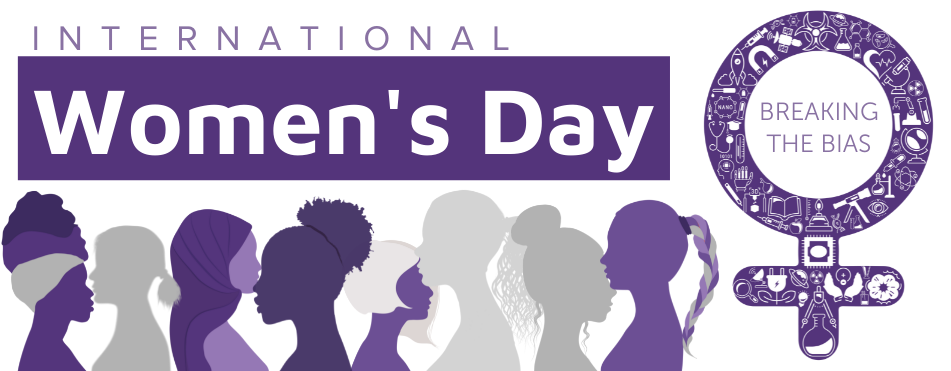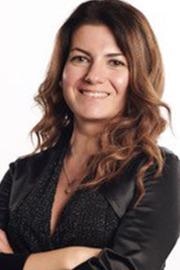This International Women's Day, we speak with Dr. Claudia Contini, a L'Oréal-UNESCO UK Rising Talent Fellow and future BBSRC Fellow at Imperial College London. We discuss how her current research in synthetic biology could help implement nanomedicine further into the healthcare sector, and her thoughts on the actions needed to #BreakTheBias.

What is your favorite thing about conducting research in the UK, and what made you choose to be based there?
The UK has a vivid, world-class and motivating research landscape where everyone can build their careers. Plus, I work immersed in an international environment which allows me to interact and establish strong relationships with people from other countries, learn new cultures and share a different perspective.
The UK offers a variety of opportunities for career progression, a fundamental aspect I consider when choosing where to be based.
My work is an important part of my life. For me, it is not just a job; it is a real passion to grow and a favorite hobby. Having the possibility to grow professionally is what motivates me the most.
Could you tell us more about your responsibilities as a L'Oréal and UNESCO UK Women in Science Engineering Fellow?
The L'Oréal and UNESCO UK award recognizes the outstanding work of women scientists and facilitates their promising scientific research. Despite the growth of the number of women pursuing a scientific career, female scientists continue to encounter many obstacles in their careers.
More initiatives like the L'Oréal and UNESCO UK and inclusivity in STEM need to be constantly promoted!
As L'Oréal and UNESCO UK Fellow, I will always advocate and promote gender equality in STEM.
'Manufacturing Polymeric Porous Capsules' is the title of your upcoming research article. How did you become involved with this study, and can you share any details?
My research focuses on creating minimal model systems of cells to recreate cell-like behaviors.
The manufacturing of polymeric porous capsules can provide a solution in mimicking the molecular exchange of cells. These systems, in fact, possess pores that allow the exchange of material with the environment while retaining larger components in their inside.
The article will offer a guideline on the different strategies that can be employed to make polymeric porous capsules.
Over the years, you have been involved with multiple research projects. Are there any that stand out to you?
My prime interest and aim of my recent fellowship awards are to set inanimate matter into motion.
Among all the research projects, the Science Advances and Nature Communications works demonstrate that it is possible to obtain motile soft-matter systems. This is very interesting because these studies show that it is possible to achieve complex cell-like functions such as motility using minimal model systems made of a few components.
These studies also open new horizons of biomedical applications for the construction of smart drug delivery systems.

Image Credit: Vink Fan/Shutterstock.com
Investigating the interaction between nanomaterials and biological systems can help to improve drug design and delivery. Your research interests relate to bottom-up synthetic biology; what is this, and how can it help these investigations?
The bottom-up synthetic biology approach aims to create artificial cell models using molecular building blocks from scratch. These cell-like systems are 100% controllable and can be used as a functional unit to understand biological phenomena such as the interaction between nanomaterials and lipid membranes.
Knowing how a nanomaterial interacts with lipid membranes allows improving the design of drug delivery systems. The investigations on the nanomaterial/membrane interactions are also helpful in providing insights into the nanotoxicity of different materials and how to prevent it.
In your opinion, what are the major challenges nanomedicine faces to become fully integrated into healthcare systems?
One of the major challenges of nanomedicine is to avoid side effects. After administration, nanomedicines and drug molecules distribute not only in the site of action but also in multiple districts of our body, causing side effects which can be quite severe in the case of chemotherapy.
My research aims to tackle this limitation by engineering a well-defined soft-matter system that exhibits autonomous and directional motion in response to its environment. This will pave the way for applications in clinical and industrial settings.
For example, synthetic motile systems will allow an intelligent and active delivery of therapeutics directly to a specific target site or the swimming to specific sites that require bioremediation or the generation of artificial tissues and dynamic materials adaptive to their environment.
Multidisciplinary research is more than just working with researchers in different fields but taking a global approach to collaboration. What more could be done to improve connections between international communities, especially women in STEM?
There are increasing efforts to promote a global approach to collaboration. A solution to ths could be realizing and establishing large collaborative networks to bring together researchers from different fields to tackle a common global challenge.

Image Credit: Angelina Bambina/Shutterstock.com
This year's theme for International Women's Day is #BreakTheBias, focusing on forging an inclusive, diverse, and equal future between genders. What would you say is the most important action to be taken to achieve this?
In my opinion, a radical change of culture is required, which unfortunately is taking too long to occur.
We need more female leaders and role models in STEM; this absence perpetuates and supports an exclusionary, male-dominated culture that is not attractive to women.
STEM needs more women covering leadership roles to inspire the young female generation and act as a radical change in this current male-dominated culture and environment.
More support should be given to female scientists to help balance maternity leave and career responsibilities without compromising a successful career. Financial and career support opportunities should be more available to overcome the gap and achieve equality between a female and male career trajectory.
Continue reading: International Day of Women and Girls in Science.
About Dr. Claudia Contini
 Claudia Contini is currently a L'Oréal-UNESCO UK Rising Talent and BBSRC Fellow at Imperial College London, working in bottom-up synthetic biology.
Claudia Contini is currently a L'Oréal-UNESCO UK Rising Talent and BBSRC Fellow at Imperial College London, working in bottom-up synthetic biology.
Her multidisciplinary training comprises a Master's degree in medical chemistry at the University of Padua, Italy and a Ph.D. in Physical Chemistry at the University College London, UK. This has been followed by a postdoctoral position focused on investigating the interactions at the bio-nano interface at Imperial College London (ICL).
She then obtained an ISSF Fellowship (ICL, UK) to create innovative protocells and the award of a prestigious TUM Foundation Fellowship from the Technical University of Munich, Germany (postponed due to COVID-19).
This has been followed by the recent award of a L'Oréal-UNESCO UK Engineering Fellowship and a 3-years BBSRC Fellowship. Multiple awards have recognized her research, including the 'Italy Made Me' award from the Italian Ambassador in London to recognize her innovative research carried out in the UK.
Banner images courtesy of Melitas & M.Style/Shutterstock
Disclaimer: The views expressed here are those of the interviewee and do not necessarily represent the views of AZoM.com Limited (T/A) AZoNetwork, the owner and operator of this website. This disclaimer forms part of the Terms and Conditions of use of this website.